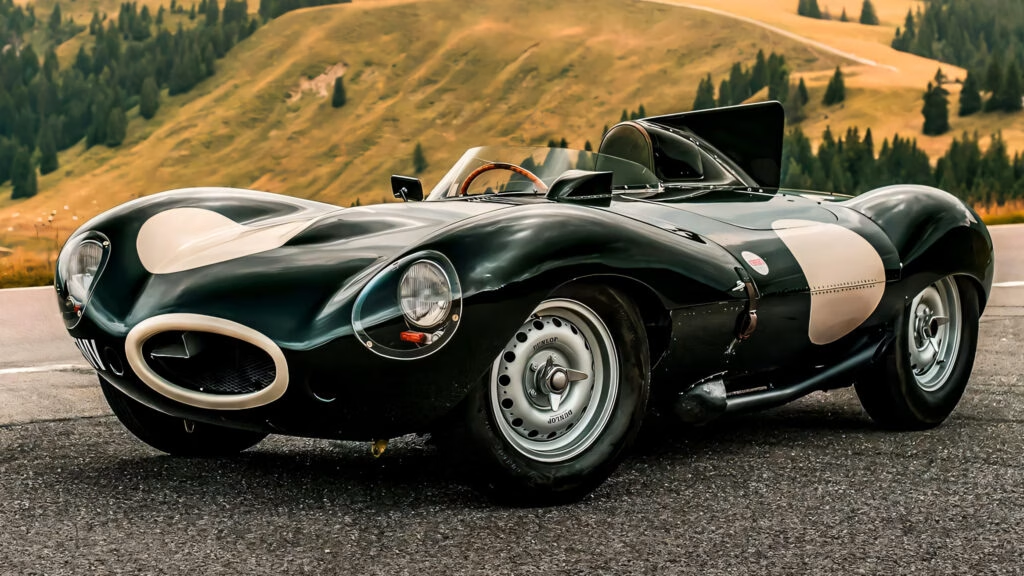What Makes the Jaguar D-Type So Coveted Among Collectors?
Ask any classic car enthusiast about the most iconic race cars of the 20th century, and the Jaguar D-Type is bound to come up. With only 71 ever built between 1954 and 1957, its rarity is just the beginning of the story. The D-Type was designed for one purpose: to dominate the 24 Hours of Le Mans. And dominate it did, clinching victory three years in a row—1955, 1956, and 1957. That kind of pedigree doesn’t just earn you a place in the record books; it cements your status as a legend.
But there’s more to its allure. The D-Type’s innovative design, with its aerodynamic curves and advanced engineering for the era, set it apart from anything else on the track. The car’s monocoque construction and distinctive tail fin weren’t just for show—they were born from a relentless pursuit of speed and stability. For collectors, owning a D-Type isn’t just about the car itself; it’s about holding a piece of motorsport history that changed the game.
How Did This Particular D-Type Stand the Test of Time?
Chassis XKD 551 is a bit of a unicorn, even by D-Type standards. Sold to its first owner in October 1957, it was originally converted for street use—a rare twist for a car bred for the circuit. That meant adding a passenger door, a windshield, and removing the central bulkhead. Over the years, it passed through several hands, including Australian Formula 1 driver Paul Hawkins, before landing in Switzerland.
What’s remarkable is how this D-Type has been preserved. In the 1970s, all the street modifications were reversed, restoring the car to its original racing specification. The original inline-six engine was carefully removed for preservation, replaced by another unit to keep the car running without risking the heart of the beast. Fast forward to 2005, and the original engine was rebuilt and recently reunited with the chassis. For the past 31 years, this car has been in the care of a single Swiss collector, spending most of its life in storage—a time capsule waiting to roar back to life.
Why Are D-Type Values Skyrocketing?
Let’s talk numbers. In 2016, the D-Type that won the 1955 Le Mans fetched over $21 million at auction—a jaw-dropping figure that reflects both the car’s rarity and its racing pedigree. The car in question here, expected to sell for between $6.5 million and $7.75 million, is no slouch either. That’s enough to buy a mansion in just about any city on the planet.
What’s driving these prices? It’s a mix of scarcity, provenance, and the growing appetite for blue-chip collector cars. According to Hagerty’s Price Guide, values for top-tier classic race cars have outpaced many traditional investments over the past decade. When you add in the D-Type’s eligibility for prestigious historic events—think Goodwood Revival, Mille Miglia Storica, Le Mans Classic, and Monaco Historic Grand Prix—the appeal only grows. For many, it’s not just about owning the car; it’s about the experiences and bragging rights that come with it.
Can You Really Drive and Race a Vintage D-Type Today?
Absolutely, and that’s part of the magic. Unlike some museum pieces, this D-Type is eligible for a host of historic racing events. That means you could, in theory, line up on the grid at Goodwood or cruise through the Italian countryside during the Mille Miglia. Of course, you’ll want to treat it with respect—after all, you’re piloting a multimillion-dollar artifact—but these cars were built to be driven.
Modern historic racing regulations are designed to keep things safe while preserving the spirit of competition. Many owners choose to participate in demonstration laps or regularity rallies rather than all-out racing, but the option is there. And let’s be honest: few things compare to the thrill of hearing that rebuilt inline-six engine sing as you sweep through a corner, just as it did nearly 70 years ago.
What Sets This D-Type Apart from Other High-Value Classics?
With so many legendary cars crossing the auction block each year, what makes this D-Type special? For one, its originality. The fact that it retains its factory engine—rebuilt and reinstalled—adds significant value in the eyes of collectors and historians alike. Its unbroken chain of careful ownership, especially the last three decades in Switzerland, means it hasn’t been over-restored or modified beyond recognition.
Then there’s the never-raced factor. While some might see that as a drawback, it actually means the car has avoided the wear and tear of competition, preserving its integrity. For purists, that’s a big deal. And with eligibility for the world’s most exclusive historic events, it’s the kind of car that opens doors—literally and figuratively—in the classic car community.
What’s the Real-World Impact of Owning a Car Like This?
Let’s not kid ourselves: buying a D-Type at this level isn’t just a financial decision. It’s a lifestyle choice. Owners become stewards of history, responsible for preserving and sharing these machines with future generations. There’s a growing trend among collectors to showcase their cars at events, museums, and even charity drives, rather than hiding them away. It’s about community, passion, and a shared love for the golden age of motorsport.
The big takeaway? Chasing a D-Type isn’t about perfection—it’s about smarter adjustments. Whether you’re a seasoned collector or just dreaming big, start with one change this week: dig deeper into the stories behind the cars you love. You’ll likely spot the difference by month’s end, not just in your knowledge, but in the way you appreciate every curve, every roar, and every mile of automotive history.

